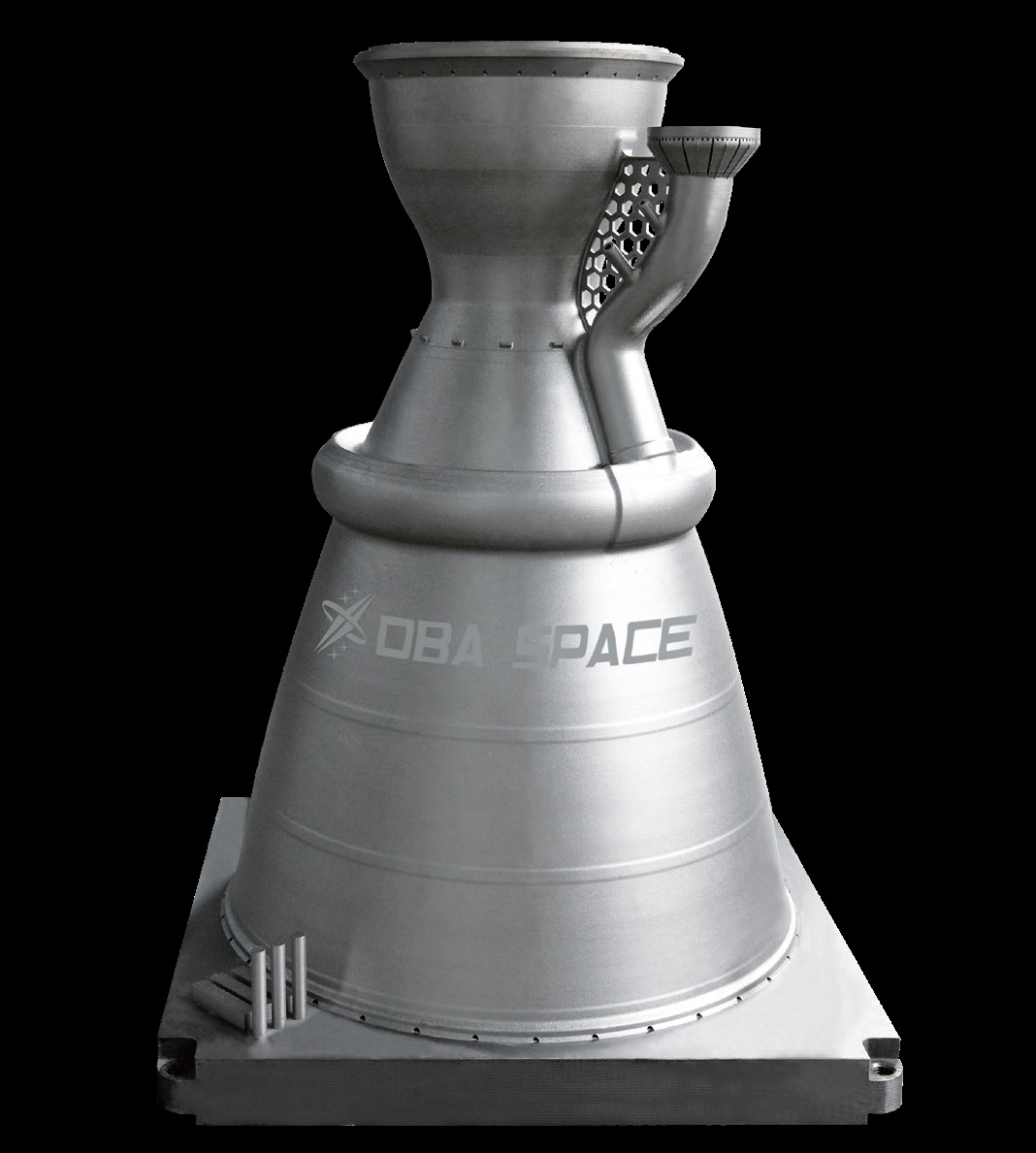Our #TECH_Newser covers ‘news of the day’ #techNewserTechnology content.
| cutline • press clip • news of the day |
China’s Deep Blue Aerospace Uses Farsoon Large Format Metal 3D Printing to Build Rockets – 3DPrint.com | The Voice of 3D Printing / Additive Manufacturing.
We’re in for an eventful 2022 in the Chinese space sector. At least 95,000 space-related enterprises are booming; space tourism operators plan to lift off for the first time in 2025, and startups are attracting plenty of finance thanks to their robust growth, among them Deep Blue Aerospace. Focused on the R&D of reusable rockets, Deep Blue has already secured millions in funding and is using the money to accelerate the manufacturing process behind its rocket and engines. Boasting at least three 3D printing partners, the company has adopted additive design thinking since its foundation in 2016 and even plans to build an AM intelligent manufacturing base in Nantong by 2024.
Deep Blue Races SpaceX with Metal 3D Printing
Usually comparing its R&D approach to SpaceX, Deep Blue has been fine-tuning its 3D printing focus, and that includes investing in Farsoon Technologies’ large-format metal system FS621M in 2022 to explore innovative manufacturing solutions for rocket engines. The commercial rocket manufacturer has gone on to produce rocket engine parts using Farsoon’s metal 3D printing technology.
This year, Deep Blue enhanced its batch production of single-piece, large-sized rocket engine combustion chambers using Farsoon’s FS621M system. The company revealed that its additively manufactured Inconel combustion chamber measures 780 mm (30.7 inches) in height and 550 mm (21.7 inches) in diameter. While the space company has described a few challenges like the build size, function integration, and detail resolution, the advanced additive manufacturing process enabled many innovations, including consolidated design, lightweight lattice structures, and self-supported geometries. In addition, other rocket engine features, such as complex geometries with hundreds of internal cooling ribs and channels, were designed to promote the combustion efficiency of the rocket engine.
Farsoon Technologies’ FS621M system. Image courtesy of Deep Blue Aerospace.
Commenting on its latest 3D printing achievement, Deep Blue Aerospace’s head of AM, Tian Cailan, indicated that as a critical component of the rocket engine, the combustion chamber has to achieve the required performance, efficiency, and reliability under extreme operating conditions of heat and pressure.
“We are fully convinced with the high quality, fast production speed, and operational stability delivered with Farsoon’s FS621M system. We are able to offer products that are significantly lighter, more repeatable, yet demonstrate much better properties during the functional test, which is essential to meet the demanding standards of the aerospace industry,” pointed out Cailan.
As one of China’s first commercial rocket manufacturers to use industrial metal 3D printing for key components engineering, Deep Blue is capable of building parts at only a fraction of the cost compared to traditional technologies. In fact, at least 85 percent of the brand’s rocket engine components are built using metal 3D printing, which could increase in the future.
“Farsoon’s FS621M offers us the ability to rapidly manufacture large-sized engine parts featuring light-weight design, structural integration, improved performance, and reliability; with only a fraction of the cost, labor and lead time compared to the traditional technologies,” detailed Cailan.

Rocket engine combustion chamber produced by FS621M. Image courtesy of Deep Blue Aerospace.
China’s Burgeoning NewSpace 3D Printing Scene
Considered among the most recognized Chinese powder bed fusion companies, Farsoon has been operating in China since 2009 before becoming well known in Europe and America. Its FS621M was designed to allow economical production of oversized aerospace parts with an accelerated design-validation cycle of 80% compared to the conventional manufacturing processes.
Deep Blue Aerospace’s rocket engine manufacturing technology is also unique in China. Its Thunder engine series – which includes the Thunder R1 and R2 – is the first liquid oxygen kerosene engine manufactured through 3D printing processes nationwide. In late June 2022, the ignition test of the 20-ton-thrust liquid oxygen kerosene rocket engine Thunder-R1, designed to deliver high performance while being economical for low volume production rockets, was completed.
Rocket engines are just the tip of the iceberg for Deep Blue. The company has also been developing its medium-class orbital launch vehicle, known as Nebula-1, which will be powered by the Thunder engine and will complete its first orbital launch-recovery mission in late 2024.
In the immediate future, Deep Blue will continue with vertical take-off and vertical landing (VTVL), launching tests at a high altitude––which will follow a previously successful VTVL 100-meter jump last October.
The company is confident that combining its rocket engine designs with Farsoon’s expertise will keep pushing the boundaries in metal powder bed fusion technology for large-scale engine parts production.
Subscribe to Our Email Newsletter
Stay up-to-date on all the latest news from the 3D printing industry and receive information and offers from third party vendors.
‘News of the Day’ content, as reported by public domain newswires.
Source Information (if available)
It appears the above article may have originally appeared on 3dprint.com and has been shared elsewhere on the internet, repeatedly. News articles have become eerily similar to manufacturer descriptions.
We will happily entertain any content removal requests, simply reach out to us. In the interim, please perform due diligence and place any content you deem “privileged” behind a subscription and/or paywall.
First to share? If share image does not populate, please close the share box & re-open or reload page to load the image, Thanks!


